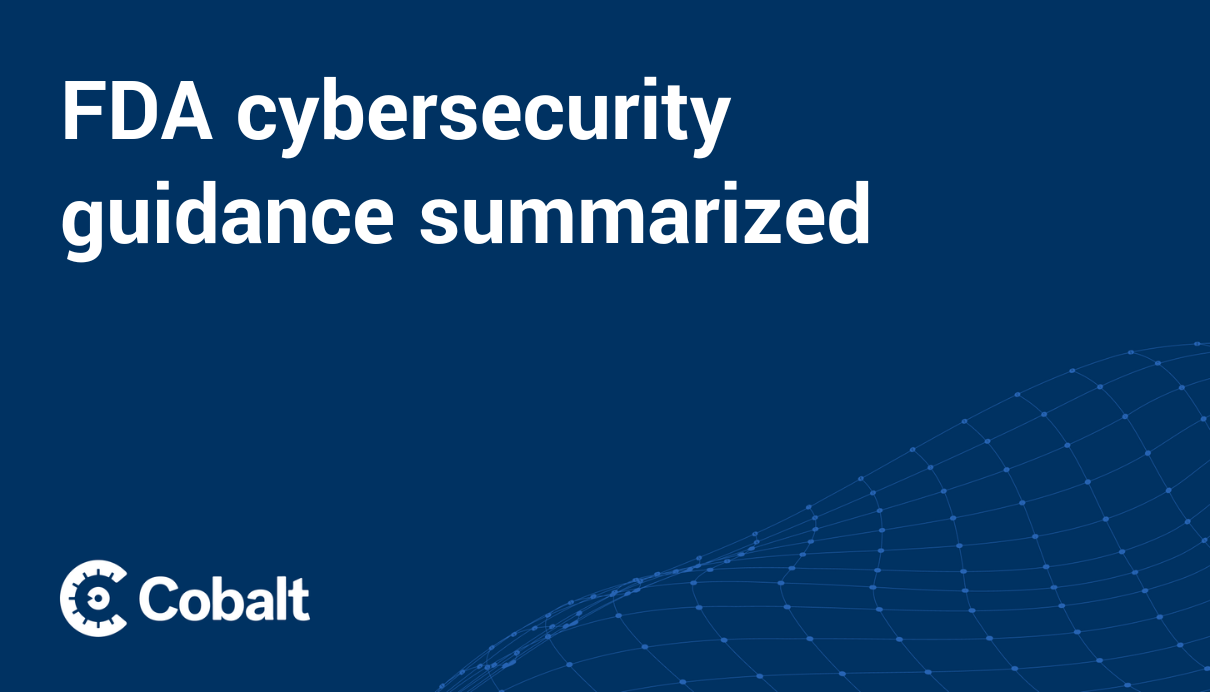In an era where technology and healthcare converge, the security of medical devices has never been more critical.
As these devices become increasingly interconnected, the potential for cybersecurity threats grows, posing risks to patient safety and data privacy. Recognizing this, regulatory bodies such as the Food and Drug Administration (FDA) have stepped up efforts to enforce stringent security measures.
Recently, the FDA has introduced new regulations aimed at bolstering medical device testing, a move that underscores the agency's commitment to patient safety in the digital age.
The FDA's recent update to its regulatory framework, the Quality Management System Regulation (QMSR) Final Rule, aligns their regulations with the ISO 13485:2016 standard, aiming to elevate global medical device quality and safety while simplifying global market access for U.S.-based manufacturers.
By aligning with this ISO standard, manufacturers can streamline their compliance processes for both domestic and international markets, reducing regulatory barriers and fostering more seamless integration of medical devices into global healthcare systems.
The implications of these regulatory changes are designed to help ensure that their devices are not only effective and safe but also secure against cyber threats. However, compliance necessitates significant investment in cybersecurity measures, compliance activities, and potentially, the redesign of existing devices to meet the stringent new standards.
What is a Medical Device Security Assessment?
A medical device security risk assessment is more than a procedural necessity. It's a foundational part of healthcare cybersecurity, ensuring that the integration of technology into patient care does not become an attack vector.
This evaluation process is designed to systematically identify and address vulnerabilities in medical devices that could be exploited by cyber threats in the increasingly connected Internet of Things (IoT) ecosystem.
The assessment process involves several key steps, including:
1. Penetration Testing (Pentesting)
This process simulates cyberattacks on medical devices or their associated support systems to uncover potential vulnerabilities that could be leveraged by malicious actors. Pentesters deploy a broad spectrum of techniques specifically tailored to the healthcare context, such as exploiting software vulnerabilities, overcoming physical security protocols, and evaluating the resilience of devices against social engineering strategies. The objective is to identify and thoroughly document these vulnerabilities, allowing for preemptive remediation.
2. Vulnerability Scanning
Vulnerability scanning is an automated procedure tailored for medical devices and their supporting systems, designed to detect known vulnerabilities. This essential security measure leverages comprehensive databases of recognized security flaws, including the Common Vulnerabilities and Exposures (CVE) database, to pinpoint potential threats. While vulnerability scanning encompasses a broader scope and is less focused than penetration testing (pentesting), it is indispensable for continuously monitoring and updating the security status of medical devices.
3. Threat Modeling
Threat modeling in the context of medical devices involves mapping out potential adversaries, their objectives, and the tactics they might employ to compromise device security. This strategic process is crucial for understanding the spectrum of risks and for aligning security measures with the most significant and impactful threats. Typically initiated during the early design phases of medical devices, threat modeling is an ongoing activity that evolves with the emergence of new threats, ensuring that devices are designed and updated with a clear understanding of the security landscape they operate within.
4. Security Auditing and Compliance Checking
Security auditing in the medical device sector encompasses a thorough examination of the security framework and policies governing a device. Meanwhile, compliance checking verifies adherence to pertinent regulations, such as those stipulated by the FDA. These activities often include an in-depth review of documentation, security protocols, and incident response strategies to confirm their sufficiency and effectiveness. Through these processes, medical devices are ensured to not only meet regulatory standards but also to embody best practices in cybersecurity.
5. Risk Analysis and Management
Risk analysis and management is the process of identifying, evaluating, and prioritizing risks based on the likelihood of occurrence and potential impact. This involves not just identifying vulnerabilities but also assessing the possible consequences of their exploitation. Risk management strategies are then developed to mitigate these risks, including implementing security controls and creating incident response plans.
6. Firmware Analysis
Reviewing the source code of the firmware on medical devices can uncover vulnerabilities that might not be evident through other testing methods. This process involves analyzing the firmware for binaries or reverse engineering how the device functions by examining other issues that could compromise security.
7. Physical Security Testing
Physical security testing assesses the device's resilience to tampering and unauthorized physical access. This is particularly important for devices that can be accessed in public or semi-public spaces, such as medical kiosks or wearable health monitors, ensuring that physical controls are in place to prevent tampering. It's a continuous process that adapts to new threats and changes in the device's operational environment.
The real-world importance of these assessments can be seen in the healthcare sector's past experiences with cyberattacks. For example, the WannaCry ransomware attack in 2017 significantly impacted healthcare services globally, including disabling medical devices. Another instance is the recall of nearly half a million pacemakers in 2017 due to security vulnerabilities that could allow unauthorized access to the device's settings, potentially endangering patients' lives.
Overview of FDA Requirements
Understanding the critical role of security assessments in medical devices paves the way for a deeper discussion on regulatory compliance, highlighting how the FDA's updated requirements are designed to reinforce this crucial connection.
Key Components of the FDA's Updated Regulations
- Pre-Market Requirements: The FDA mandates that manufacturers integrate cybersecurity considerations into the design and development of medical devices. This includes conducting rigorous risk assessments to identify potential vulnerabilities and implementing measures to mitigate these risks before the devices are marketed.
- Post-Market Management: Recognizing that cybersecurity is an ongoing challenge, the FDA requires continuous monitoring of medical devices for new vulnerabilities and threats. Manufacturers must have a structured plan to address any security issues that arise during the device's lifecycle, including timely updates and patches.
- Transparency and Reporting: The regulations also emphasize the importance of transparency with the FDA and other stakeholders. Manufacturers are required to report significant cybersecurity incidents promptly and collaborate with the healthcare community to manage and mitigate risks.
- Guidance Documents: The FDA has published several guidance documents to assist manufacturers in complying with cybersecurity requirements. These documents outline best practices for pre-market submissions, post-market management, and the handling of cybersecurity incidents.
Several high-profile cybersecurity incidents underscore the critical importance of robust security assessments in healthcare. These breaches have highlighted vulnerabilities in medical devices and systems, leading to increased scrutiny and efforts to enhance device security.
One of the most alarming breaches involved the compromise of hospital infusion pumps. Hackers were able to infiltrate the network these pumps were connected to and manipulate the dosage controls, posing a direct threat to patient safety. This incident spotlighted the potential for cyberattacks to have life-threatening consequences and the need for comprehensive security measures.
Navigating the Cybersecurity of Medical Devices
The FDA's alignment with ISO 13485:2016 through the Quality Management System Regulation (QMSR) Final Rule reflects a commitment to improving cybersecurity in medical devices, requiring manufacturers to incorporate cybersecurity considerations from design to development and ensure continuous monitoring for vulnerabilities.
Medical device security assessments, including penetration testing, vulnerability scanning, and threat modeling, are essential for identifying and mitigating potential cybersecurity threats. These assessments are crucial for protecting devices that are vital to patient care against cyber risks. The importance of such evaluations is highlighted by past incidents of cybersecurity breaches, which have led to increased efforts to secure medical devices.
Cobalt's pentesting services for healthcare provide a resource for manufacturers to navigate FDA compliance and cybersecurity challenges. Cobalt specializes in simulating cyberattacks to uncover vulnerabilities, allowing for their mitigation before they can affect patient safety. This service supports manufacturers in meeting regulatory requirements and enhancing device security.








